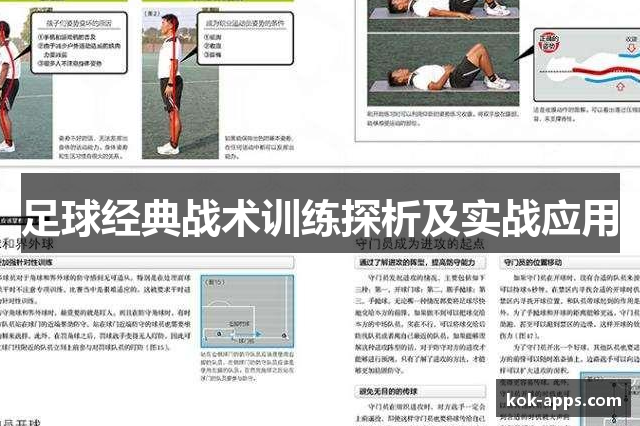足球经典战术训练探析及实战应用
- 2024-09-13 11:51:31
- 66
Certainly! Here's the structured article on "Analysis and Practical Application of Classic Football Tactical Training":
**Abstract:**
In the realm of football, tactical training forms the bedrock upon which teams build their success. This article delves into the nuances of classic football tactics, exploring their evolution, strategic intricacies, practical applications on the field, and their impact on modern playstyles. By examining these aspects comprehensively, this piece aims to elucidate how tactical training influences team dynamics, player roles, and competitive outcomes in contemporary football.
---
1、Evolution of Tactics
Football tactics have evolved significantly over the decades, adapting to changes in player athleticism, technological advancements, and strategic innovations. Early formations like the W-M and 4-2-4 laid the groundwork for more complex systems seen today. As the game progressed, tactical diversity grew, with coaches like Rinus Michels and Arrigo Sacchi pioneering pressing and zonal marking. This section explores the historical development of football tactics and their influence on modern gameplay.
The implementation of Total Football by Ajax and the Dutch national team in the 1970s showcased fluid positional interchangeability, challenging traditional roles and formations. This tactical evolution emphasized collective movement and intelligent pressing, setting a precedent for future tactical innovations.
Modern adaptations such as Guardiola’s positional play and Klopp’s gegenpressing have refined these concepts further, demonstrating how tactics continue to evolve in response to changing football dynamics and technological advancements.
2、Strategic Intricacies
Effective tactical training hinges on understanding strategic intricacies that dictate gameplay. Central to this is the concept of spatial awareness, where players learn to exploit gaps in the opposition's defense while maintaining defensive shape. Coaches emphasize tactical discipline and situational awareness to ensure cohesive team performance.
Moreover, tactical flexibility is crucial in adapting to different opponents and match situations. This involves pre-match analysis of opponents’ strengths and weaknesses, enabling teams to adjust formations and strategies accordingly. Tactical drills focus on quick decision-making and communication, essential for executing strategies effectively under pressure.
The integration of set pieces into tactical training further enhances strategic depth, with teams employing rehearsed routines to capitalize on scoring opportunities and disrupt opposing defenses.

3、Practical Applications on the Field
On-field application of tactical training translates theoretical knowledge into practical execution. Key principles such as positional play and pressing are honed through repetitive drills that simulate match scenarios. This hands-on approach helps players internalize tactical concepts, enhancing their ability to read the game and make informed decisions.
Training sessions often include small-sided games and tactical exercises that mimic specific tactical situations, promoting teamwork and collective understanding. Coaches use video analysis to provide feedback, reinforcing learning and facilitating tactical adjustments.
During matches, teams implement tactical strategies tailored to exploit opponents’ vulnerabilities, demonstrating the direct application of training principles in competitive settings.
4、Impact on Modern Playstyles
The evolution of football tactics has profoundly influenced modern playstyles, shaping the way teams approach matches strategically and tactically. Contemporary football emphasizes possession-based play, high pressing, and dynamic positional interchangeability.
Teams like Barcelona under Guardiola and Liverpool under Klopp have epitomized these principles, blending tactical acumen with technical proficiency to dominate both domestically and internationally.
Furthermore, tactical innovations continue to emerge, driven by advancements in sports science and data analytics. The use of statistics and performance metrics informs tactical decision-making, providing teams with a competitive edge.
总结:
KOKAPP下载Football tactics are not merely a set of strategies but a dynamic framework that evolves alongside the game itself. From historical formations to modern adaptations, tactical training shapes team dynamics and competitive outcomes. By mastering strategic intricacies and applying them effectively on the field, teams can elevate their performance and achieve success in the ever-evolving landscape of football.
As football evolves, the role of tactical training remains integral, influencing playstyles and shaping the future of the game. By understanding its historical context, strategic intricacies, practical applications, and impact on modern play, teams can harness the power of tactics to achieve excellence and competitive success.
